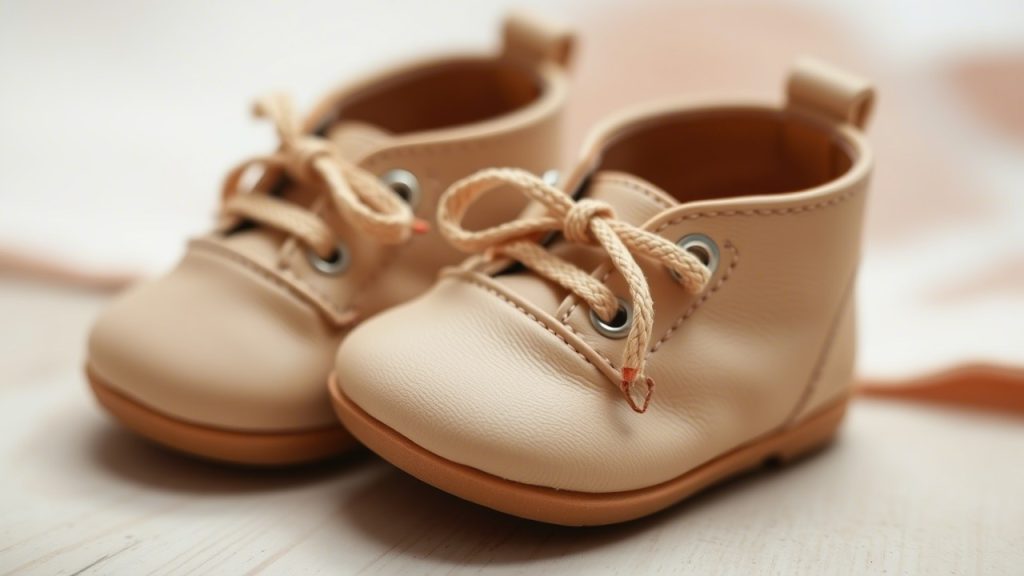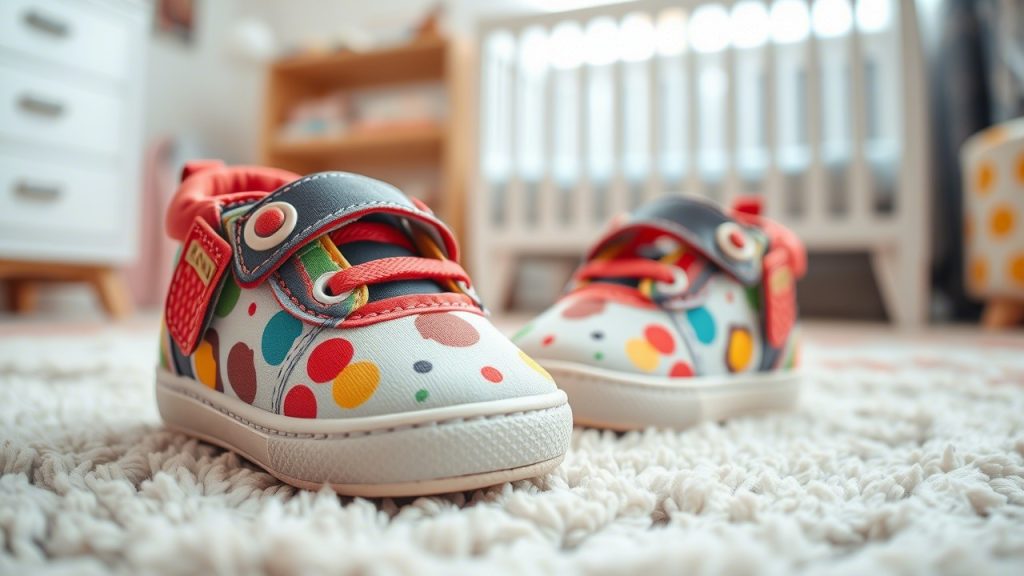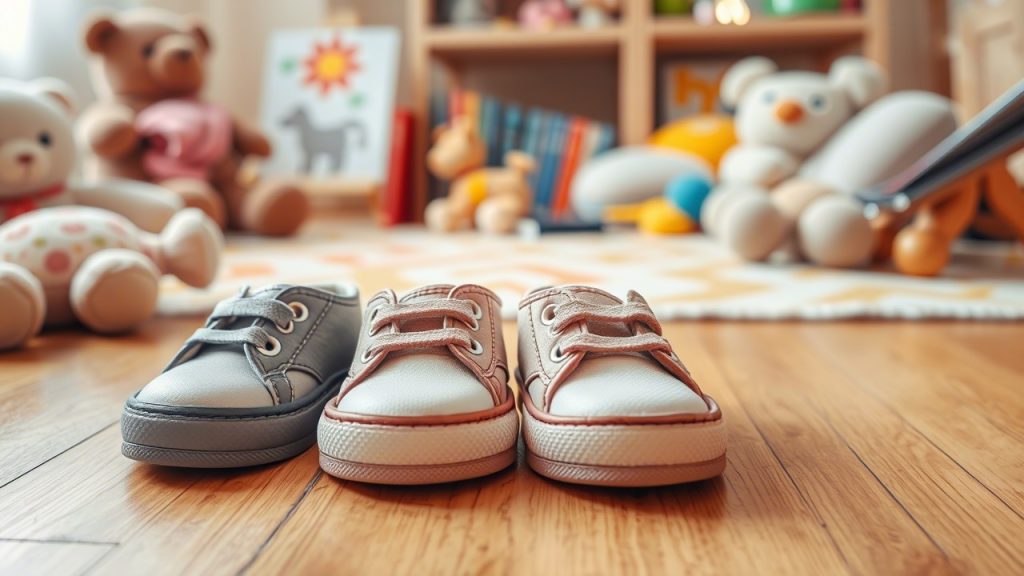Watching your toddler take their first steps is one of the most heartwarming experiences for any parent. But once those wobbly first steps turn into full-blown running, climbing, and exploring, safety becomes a top concern — even inside your own home.
While you might baby-proof furniture and add safety gates, one area that’s often overlooked is footwear. The right shoes not only protect a toddler’s developing feet but also prevent slips, falls, and injuries indoors. That’s why choosing the best toddler shoes for indoor safety is essential.
Let’s get started!
Why Proper Indoor Shoes Matter for Toddlers
When toddlers are indoors, you might think barefoot is the safest option — and in some cases, it is. However, slick hardwood, tile floors, or other slippery surfaces can make walking and running hazardous without the right footwear.
Indoor toddler shoes provide:
- Better grip on slippery floors
- Protection from stubbed toes or sharp objects
- Support for growing arches and developing muscles
- Warmth during colder months
- Hygiene by creating a barrier between feet and dirty surfaces
Choosing shoes specifically for indoor wear ensures your toddler can explore confidently and safely.
Features to Look for in Indoor Toddler Shoes
Before diving into the top picks, it’s important to know what features truly matter:
- Non-slip soles: Essential for preventing slips and falls.
- Lightweight design: Heavy shoes can tire toddlers out quickly and increase tripping hazards.
- Flexibility: Shoes should bend easily to allow natural foot movement.
- Breathability: Indoor play can make feet sweaty, so materials that allow air flow are key.
- Easy on and off: Toddlers can be impatient — opt for shoes with Velcro, elastic, or slip-on designs.
- Snug but not tight: Shoes should stay securely on the feet without squeezing or causing discomfort.
Armed with this knowledge, let’s dive into the list of the 10 best toddler shoes for indoor safety.
10 Best Toddler Shoes for Indoor Safety
1. Robeez Soft Sole Shoes
Why they’re great:
Robeez shoes are widely recommended by pediatricians for promoting healthy foot development. Their soft soles offer excellent grip without restricting movement.
Key Features:
- Genuine leather construction
- Non-slip suede sole
- Easy slip-on design with elastic ankles
Best for: New walkers and toddlers who love crawling and walking indoors.
2. Stride Rite 360 Soft Motion Shoes
Why they’re great:
Known for their orthopedic design, these shoes provide stability and comfort for early walkers.
Key Features:
- Rounded soles to reduce tripping
- Memory foam footbed
- Flexible and lightweight
Best for: Toddlers just transitioning from crawling to walking.
3. Attipas Toddler Shoes
Why they’re great:
Attipas shoes are a hybrid between a sock and a shoe, offering flexibility and safety for active toddlers.
Key Features:
- Non-slip rubber soles
- Breathable cotton upper
- Lightweight, sock-like feel
Best for: Toddlers who prefer sock-like comfort but still need grip.
4. Stride Rite Made2Play Phibian Sneaker Sandal
Why they’re great:
Although designed for water, the Phibian is an excellent choice for indoor play too. It’s slip-resistant, easy to clean, and highly durable.
Key Features:
- Anti-slip rubber sole
- Quick-drying materials
- Machine washable
Best for: Toddlers prone to spills and indoor messes.

5. Native Shoes Jefferson Slip-Ons
Why they’re great:
Native Shoes are ultra-lightweight and easy for toddlers to slip on by themselves.
Key Features:
- Rubber outsole with good grip
- Breathable perforated upper
- Lightweight EVA material
Best for: Toddlers who want independence when dressing themselves.
6. BirdRock Baby Moccasins
Why they’re great:
BirdRock moccasins are stylish and practical. They provide excellent grip thanks to their suede soles and allow maximum movement.
Key Features:
- Soft, genuine leather
- Non-slip suede soles
- Elastic ankle design for secure fit
Best for: Parents who want fashionable yet functional indoor shoes.
7. Livie & Luca Grip Soft Shoes
Why they’re great:
These adorable shoes combine the support of a shoe with the softness of a sock.
Key Features:
- Rubber grip soles
- Soft, breathable fabric
- Machine washable
Best for: Indoor preschool or daycare environments.
8. Momo Baby Leather Shoes
Why they’re great:
Podiatrist-approved, Momo Baby shoes offer non-skid soles with soft, flexible leather construction perfect for indoor movement.
Key Features:
- Non-slip rubber sole
- Flexible leather upper
- Hook and loop closures
Best for: Toddlers learning to balance and walk steadily.
9. UGG Kids’ Bixbee Ankle Boot
Why they’re great:
For colder indoor environments, these cozy booties keep toddler feet warm and safe.
Key Features:
- Fleece lining for warmth
- Soft, flexible sole
- Adjustable Velcro closure
Best for: Chilly winter days indoors.

10. Freshly Picked Soft Sole Moccasins
Why they’re great:
Soft, stylish, and safe, Freshly Picked moccasins are beloved by parents and toddlers alike.
Key Features:
- Durable leather
- Elastic opening for easy on/off
- Slip-resistant soft soles
Best for: Special occasions or stylish everyday wear at home.
9 Frequently Asked Questions
1. Should toddlers wear shoes indoors?
Yes, especially on slippery floors like hardwood or tile. The right shoes can prevent falls, provide support, and protect against stubbed toes and cold surfaces.
2. Are socks enough for indoor toddler safety?
Non-slip socks can work temporarily, but they lack the structure, durability, and protection that a good indoor shoe provides.
3. How do I know if a shoe has good grip?
Look for textured or rubber soles that provide traction. Avoid shoes with smooth, hard plastic soles that can slip easily.
4. Are hard soles or soft soles better for indoor shoes?
Soft, flexible soles are better for indoor shoes, especially for toddlers who are still mastering balance and coordination.
5. How should indoor toddler shoes fit?
There should be about a thumb’s width of space between the longest toe and the end of the shoe. Shoes should fit snugly without pinching.
6. How often should I replace indoor toddler shoes?
Check the fit every two to three months. Toddlers’ feet grow rapidly, and shoes can wear out from daily indoor use.
7. Can toddlers wear outdoor shoes indoors?
It’s better to have separate indoor shoes to avoid tracking dirt and germs inside, and to ensure maximum grip designed for indoor surfaces.
8. Is barefoot walking better than shoes indoors?
Barefoot walking can be great on safe, soft surfaces. However, for slippery floors, proper indoor shoes are a safer choice.
9. What materials are best for indoor toddler shoes?
Breathable materials like soft leather, mesh, and cotton are best. They offer flexibility, comfort, and proper airflow to keep little feet healthy.
Conclusion
Choosing the best toddler shoes for indoor safety is an important step in protecting your active little one. Shoes designed for indoor play should offer excellent grip, flexibility, and comfort without sacrificing support. Whether you opt for soft-soled moccasins, sock-like shoes, or supportive sneakers, the right pair of indoor shoes will help your toddler move confidently, safely, and happily through every corner of your home.
With this guide to the 10 best toddler shoes for indoor safety and the answers to your most common questions, you’re ready to find the perfect fit for your growing explorer.
Let their little adventures begin — one safe step at a time!





